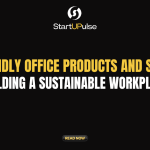
Identifying the Problems
1. No Product-Market Fit
One of the most common reasons businesses struggle to generate revenue is a lack of product market fit. This means that the product or service you’re offering doesn’t align with the needs or desires of your target market.
Solution:
● Conduct Market Research: Before making any drastic changes, gather feedback from your existing customers and potential market. To learn about their needs, do focus groups, surveys, and customer interviews.
● Pivot or Adjust Your Product: Based on the feedback, make necessary adjustments to your product or service. Sometimes, this might mean a complete overhaul, while other times, small tweaks could suffice.
● Test and Iterate: Implement changes in phases and continually test the market’s response. This iterative approach helps in fine-tuning your offerings to better meet market demands.
2. Tough Competition
Another significant hurdle is intense competition. If your market is saturated with businesses offering similar products or services, standing out becomes challenging.
Solution:
● Determine Your USP (Unique Selling Proposition): Find out what makes your company unique from the competition. This could be anything from superior customer service, unique features, or a distinctive brand story.
● Enhance Your Product: Invest in improving your product or service to offer more value than your competitors. This could involve better quality, additional features, or more affordable pricing.
● Focus on Niche Markets: Sometimes, targeting a specific niche within your broader market can help you avoid direct competition and cater to a dedicated customer base.
3. Overspending on Advertising
While advertising is crucial for visibility, overspending without a clear strategy can drain your finances without yielding significant returns.
Solution:
● Track Advertising ROI: Use analytics tools to track the return on investment (ROI) of your advertising efforts. Determine which of the channels is doing well and which is not.
● Optimize Ad Spend: Reallocate your budget towards high-performing channels and cut down on those that are not yielding results.
● Leverage Organic Marketing: Invest in organic marketing strategies such as content marketing, social media engagement, and SEO. These methods might take longer to show results but are more sustainable in the long run.
4. Broken Business Model
A flawed business model can be a silent revenue killer. If your model isn’t aligned with the market demands or operational efficiency, generating revenue becomes an uphill task.
Solution:
● Seek Third-Party Insights: Sometimes, it takes an outsider’s perspective to identify flaws in your business model. Consult with business advisors or industry experts to gain insights.
● Reassess Your Model: Evaluate whether your business model fits the current market conditions. Be open to making significant changes, such as shifting from a retail to an online model or incorporating subscription services.
● Adapt and Innovate: Stay adaptable and ready to innovate based on market trends and customer feedback. This might involve adopting new technologies or changing your business processes.
5. Pricing Issues
Incorrect pricing can deter customers and hamper your revenue. Pricing too high can make your product inaccessible, while pricing too low can undervalue your offerings and affect profitability.
Solution:
● Conduct a Pricing Analysis: Understand your cost of goods sold (COGS), operating expenses, and the competitive landscape. Make a pricing with a realistic profit margin and one that pays your expenses using the information provided.
● Test Different Pricing Strategies: Experiment with different pricing strategies like tiered pricing, bundling, or discounts to see what resonates best with your customers.
● Communicate Value: Ensure that your pricing reflects the value you offer. Sometimes, customers are willing to pay more if they perceive the value as higher.
6. Poor Product
Even with the best marketing and pricing strategies, a poor product will struggle to generate revenue. If your product doesn’t meet customer expectations or solve their problems, it’s bound to fail.
Solution:
● Collect Customer Feedback: Regularly seek feedback from your customers to identify areas of improvement. Utilise these feedback to make the necessary improvements.
● Invest in Quality: Ensure that your product meets high-quality standards. This might involve improving materials, design, or functionality.
● Stay Updated: Keep an eye on market trends and continuously innovate to stay relevant. Introduce new features or products to keep your offerings fresh and exciting.
7. Weak Goal-Setting
Without clear, actionable goals, your business may lack direction and purpose, affecting its ability to generate revenue.
Solution:
● Implement OKRs: Objectives and Key Results (OKRs) are a popular goal-setting framework that helps align your team’s efforts towards common objectives. Set clear, measurable goals and track progress regularly.
● Goal-Breaking: Break down more ambitious objectives into more doable, smaller activities. This facilitates monitoring development and enables required modifications to be made as needed.
● Review and Adjust: Regularly review your goals and strategies to ensure they are still relevant and achievable. Be flexible and willing to adjust based on performance and market conditions.
8. Lack of Bandwidth
Entrepreneurs often wear multiple hats, leading to burnout and inefficiency. If you don’t have enough time or resources to dedicate to crucial business activities, revenue generation will suffer.
Solution:
● Delegate and Outsource: Identify tasks that can be delegated to other team members or outsourced to freelancers. This gives you more time to devote to strategic tasks.
● Automate Processes: Invest in automation tools to streamline repetitive tasks such as email marketing, invoicing, and customer service.
● Hire Help: Consider hiring additional staff or bringing on a business partner to share the workload and bring in new expertise.
9. Wrong Timing
Timing plays a critical role in a business’s success. Launching a product too early or too late can significantly impact its revenue potential.
Solution:
● Market Readiness: Make sure the market is prepared for your goods before launching it. Conduct thorough market research to gauge demand and readiness.
● Strategic Launch: Plan your product launches around market trends and customer needs. Avoid launching during economic downturns or unfavorable market conditions.
● Iterate and Improve: If your initial launch doesn’t succeed, use the feedback to make improvements and relaunch at a more favorable time.
10. Little-to-No Demand
Even with a well-priced, high-quality product, if there’s no demand, generating revenue becomes impossible.
Solution:
● Expand Your Market: Seek out new markets or target audiences who could be interested in your offering. This could involve international expansion or targeting a different age group or industry.
● Adjust Offerings: Sometimes, small adjustments in your product or service can create demand. Pay attention to what your customers have to say and be open to making adjustments in response.
Actionable Steps to Turn Things Around
Step 1: Financial Assessment
First things first, dig into your financial statements. Recognise the sources and Understand where your money is going. Figure out where you can cut costs or bring in more revenue.
Step 2: Optimize Operations
Make your operations more efficient. Use technology to streamline workflows and get rid of any inefficiencies. This will help you save both time and money.
Step 3: Enhance Marketing and Sales
Boost your marketing efforts to attract more customers. Use targeted sales strategies to reconnect with old leads and explore new markets.
Step 4: Adjust Pricing Strategies
Take a look at your pricing models. Make sure they’re covering your costs while staying competitive. Find ways to add value so you can justify higher prices if needed.
Step 5: Seek Customer Feedback
Get feedback from your customers and use it to improve your products or services. This will help you better meet market demands and keep your customers happy.
Step 6: Diversify Revenue Streams
Find new ways to make money. This could mean introducing new products, upselling to existing customers, or expanding into new markets.
Step 7: Stay Competitive
Keep track of market trends and what your competitors are doing. Adjust your business model to stay ahead of the game.
Step 8: Manage Debt
Work on reducing your debt. Look into restructuring debts or negotiating better terms to ease financial pressure and improve cash flow.
Step 9: Focus on Sustainability
Adopt sustainable practices that cut costs and appeal to eco-conscious customers. This can improve your profitability and your brand image over the long term.
Step 10: Keep Learning
Stay updated on industry trends and best practices. Keep improving your business knowledge and skills to stay competitive.
Conclusion
Turning around a struggling business means understanding the problems and taking strategic steps to fix them. By identifying the root causes of your revenue issues and taking actionable steps, you can transform your business into a profitable venture. Remember that every challenge represents an opportunity for growth and improvement.

















